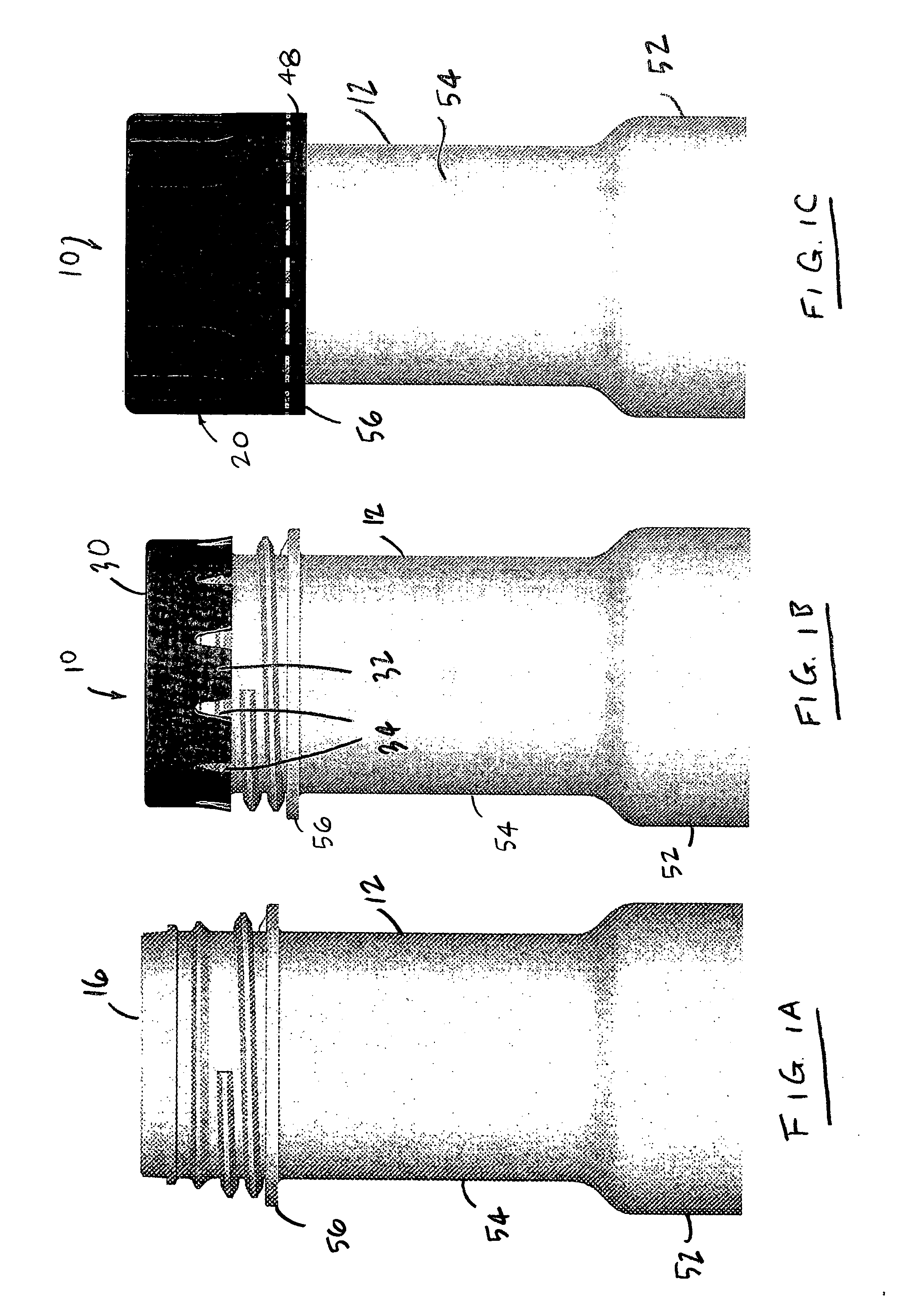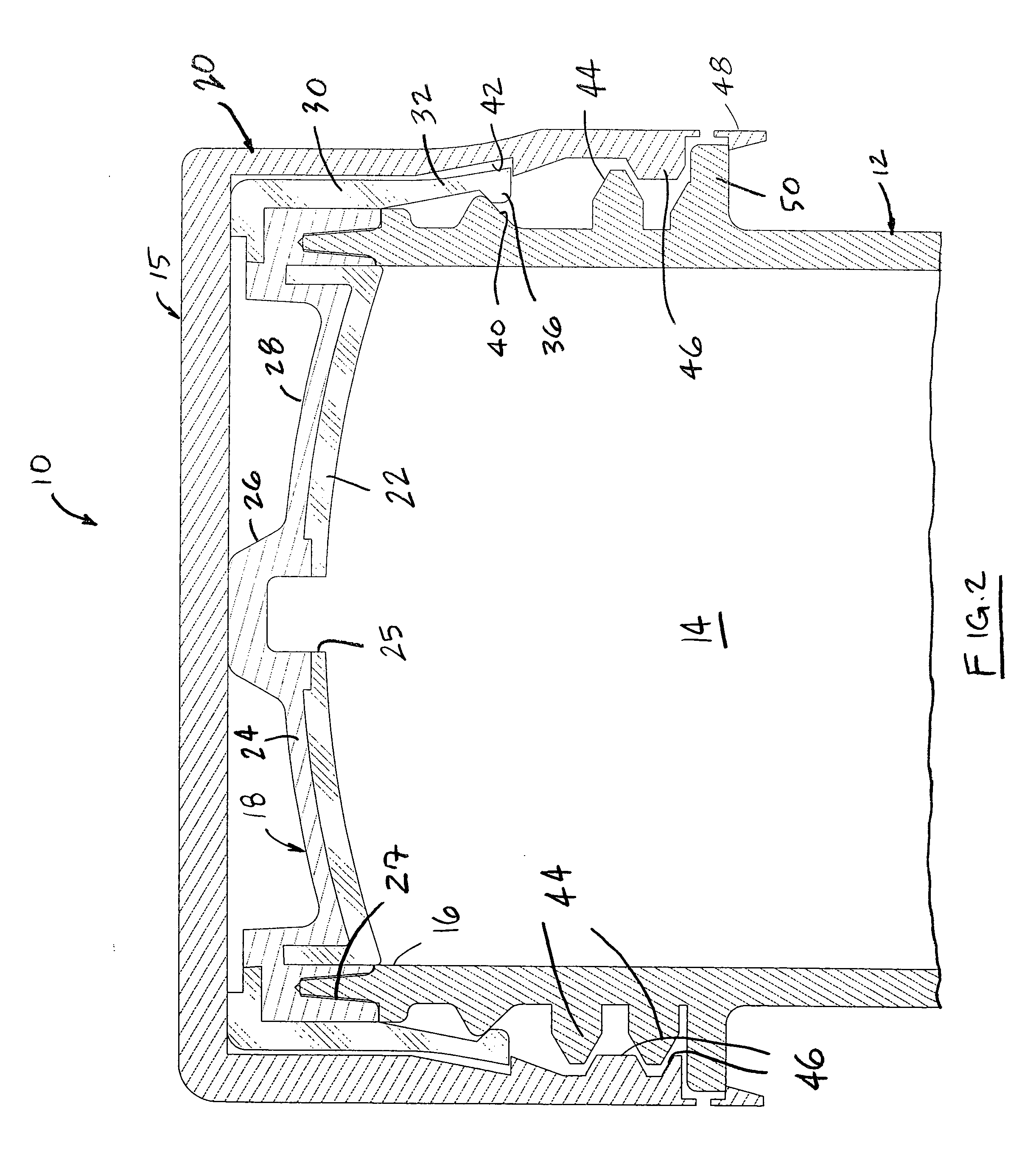Container closure with overlying needle penetrable and thermally resealable portion and underlying portion compatible with fat containing liquid product, and related method
a technology of container body and underlying portion, which is applied in the direction of sealing, packaging goods, caps, etc., can solve the problems of undetectable alteration of the taste profile of the product, difficult to remove all, and difficult to use with fat containing liquid products, etc., to avoid the problem of seal integrity, less frequent cleaning of the sterile zone, and the effect of avoiding the problem of needle penetration
- Summary
- Abstract
- Description
- Claims
- Application Information
AI Technical Summary
Benefits of technology
Problems solved by technology
Method used
Image
Examples
Embodiment Construction
[0038] In FIGS. 1A, 1B, 1C and 2, a container embodying the present invention is indicated generally by the reference numeral 10. The container 10 comprises a body 12 defining a storage chamber 14 therein for receiving a substance, such as a fat containing liquid product, and a first aperture 16 in fluid communication with the storage chamber 14. A container closure 15 includes a stopper 18 receivable within the first aperture 16 for hermetically sealing the storage chamber 14 with respect to the ambient atmosphere, and a securing member or cap 20 for securing the stopper to the body. As described further below, the stopper 18 includes a first material portion 22 and a second material portion 24. The first material portion 22 is connectable between the stopper 18 and body 12 for securing the stopper to the body, and in the illustrated embodiment, defines a second aperture 25 for exposing a predetermined portion of the second material portion 24 therethrough. As can be seen, the firs...
PUM
| Property | Measurement | Unit |
|---|---|---|
| temperature | aaaaa | aaaaa |
| wavelengths | aaaaa | aaaaa |
| time | aaaaa | aaaaa |
Abstract
Description
Claims
Application Information
 Login to View More
Login to View More - R&D
- Intellectual Property
- Life Sciences
- Materials
- Tech Scout
- Unparalleled Data Quality
- Higher Quality Content
- 60% Fewer Hallucinations
Browse by: Latest US Patents, China's latest patents, Technical Efficacy Thesaurus, Application Domain, Technology Topic, Popular Technical Reports.
© 2025 PatSnap. All rights reserved.Legal|Privacy policy|Modern Slavery Act Transparency Statement|Sitemap|About US| Contact US: help@patsnap.com



